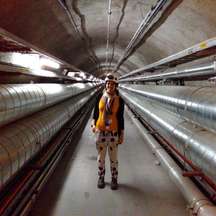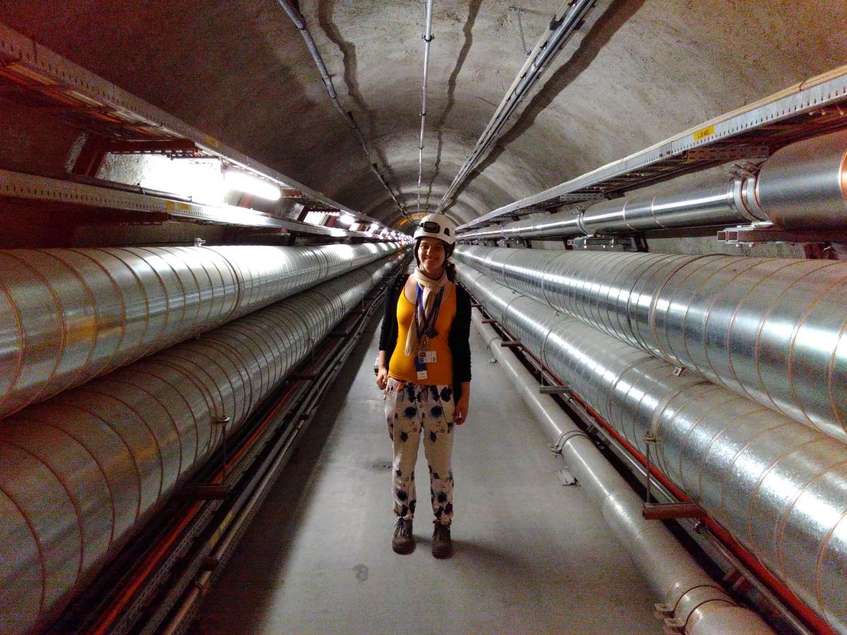
Hi, I’m Luciana, I am 22 years old and I currently work as an accelerator operator for the Super Proton Synchrotron, one of CERN’s accelerators.
I grew up in the South-east of Germany, and attended a technical college just over the border in Austria. This gave me the opportunity to learn a lot about electronics as well as getting some hands-on experience. After my graduation I had the courage to apply to the TTE program at CERN.
I worked in the TTE program in the Instrumentation section of the Radiation Protection group at CERN for 1.5 years. Just when I started to think about my future a staff position in the Accelerator Operation Group came up. With the support of my supervisor, I went through the application process, and… it was successful!
Operation is very broad, two days are never alike! In the beginning I was a bit intimidated by all the screens in the CERN Control Centre (CCC) and all the information on it, and the learning curve is very steep. It’s hard to imagine how many people and systems have to work together to make the accelerators run. We also communicate a lot between the "islands" in the CCC. I enjoy the welcoming atmosphere at CERN very much. Everyone starts out in a different country or region away from home, not knowing anyone, so everyone is really supportive and it’s easy to make friends.
One of my highlights was when my colleague and me put the first beam in the machine during a night shift after the technical stop. We checked all safety permits and necessary equipment and prepared a measurement to be able to take a picture of the passing beam, and I switched the button for the first time of the new year!

The most difficult moments are when there are problems that block the operation of the machine, and we can’t find immediately a way to fix it. You know that every minute you are searching for a solution, someone is waiting for the beam. But luckily, so far so good - a solution was always found! In these moments the team spirit in the control room is particularly important; it’s nice to know you can always count on your colleagues.
I arrive at 6.45 for the morning shift and say hello to my colleagues. I shake hands with everyone, as we are in France that’s very important! Then we start the shift handover. The last person on shift passes important information on to the next person on shift and informs them about any problems or particularities they’ve observed.
For example, today our colleagues told us that they’ve started to do measurements on the North Area beam, but couldn’t finish them, so we needed to continue. But first we had to fill the LHC! The LHC takes beam every few hours, accelerates the beam and then lets the beams collide in the experiments, so they can take data. For us in the SPS this means that every time the LHC requests beam we measured the beam in the SPS, make sure the quality is sufficient and then send the beam to the LHC through transfer line tunnels.
Then we started doing the measurements on the North Area beam that my colleagues asked for. It was a bit tricky to get the settings right, but it worked in the end. My colleague measured the size of the beam with an instrument that is called a “wirescanner” and I measured the position of the beam in the machine.
From time to time we get interrupted by access requests or phone calls from the experiments. When one experiment doesn’t get any beam, we quickly diagnose and solve their problem. Later in the day a test is scheduled for sending a different type of particles to the AWAKE experiment. Usually they use protons; this is the first time that they want to do a test with lead ions. This is not very straightforward, there are many different systems that have to play together to kick the beam into the transfer beam line leading to AWAKE. Together with the radio-frequency experts, a timing specialist and our machine physicists we finally managed to extract beam to the experiment.
At the same time we made sure to keep an eye on the quality of the other beams and to correct some parameters if necessary.
Soon, the shift comes to and end and the next colleagues arrive to take over. It's enriching and interesting work!